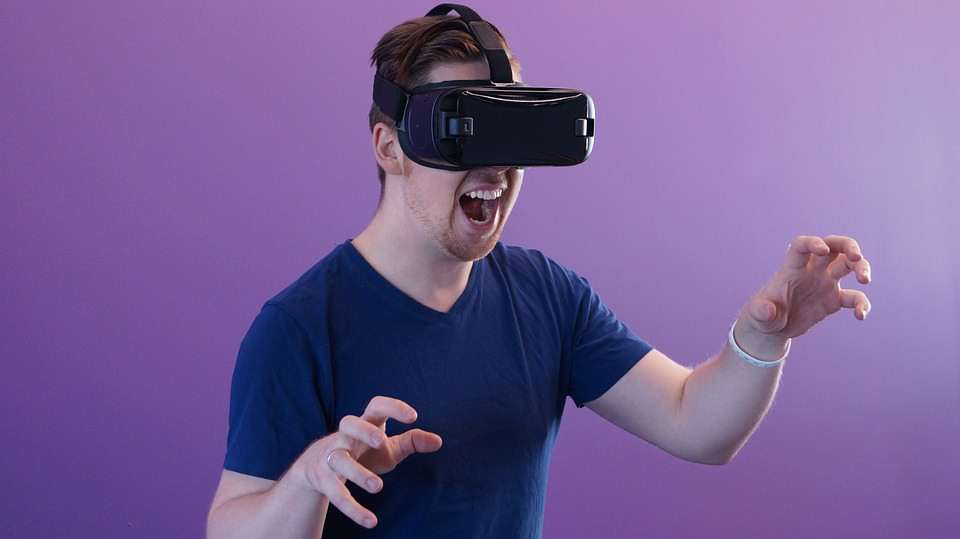Virtual reality (VR) is no longer just a sci-fi fantasy; it’s here, and it’s changing the way we experience gaming forever. Imagine stepping into a digital world where you’re not just controlling a character but actually living the adventure. Whether you’re fighting off aliens, racing at breakneck speeds, or sitting at a virtual poker table, VR is making everything feel real. This revolution is more than just fun—it’s a complete transformation of how games are played, felt, and experienced. But as with every breakthrough, it comes with its own set of challenges. Let’s take a deep dive into how VR is reshaping gaming, what makes it so exciting, and what hurdles still need to be overcome.
The Shift from Screen to Full Immersion
Traditional gaming kept players locked behind a screen, pressing buttons to navigate digital landscapes. VR breaks that barrier, offering a 360-degree world where players physically engage with their surroundings. Instead of just watching an explosion on a screen, you’re ducking, weaving, and feeling like you’re in the heat of battle. This shift from passive interaction to full immersion is what makes VR gaming so thrilling. The headset transports you into different dimensions, and with motion controllers, you can interact with the environment in a way that feels natural. This advancement is especially crucial for those who crave more than just a joystick experience—they want to be inside the game.
The Evolution of Gaming Genres in VR
VR has given birth to new gaming experiences that weren’t possible before. Traditional genres like first-person shooters and role-playing games have been reinvented, while new types of games have emerged, designed specifically for virtual reality. Casino-style gaming has also entered the VR space, offering lifelike slot game experiences where players can pull the lever with their actual hand rather than just tapping a button. The same goes for qq poker—VR lets players read virtual opponents, observe their expressions, and even bluff in real-time. This heightened realism makes gaming more strategic and engaging, especially for those who thrive on social interactions and mind games.
The Role of AI and Realistic Environments
What sets VR apart from regular gaming is its ability to create lifelike environments that feel eerily real. With AI-powered interactions, NPCs (non-playable characters) react dynamically, making the world feel alive. Whether you’re exploring a haunted house or navigating a cyberpunk city, these environments feel more personal, interactive, and unpredictable. This is a game-changer for storytelling—imagine a world where your decisions actually shape the outcome in a way that feels real rather than just triggering pre-programmed events. The fusion of VR and AI means that future games could learn from your playstyle, adapt to your decisions, and create a gaming experience that feels unique every single time you play.
The Physicality of VR Gaming: The Good and The Bad
One of the biggest differences between traditional gaming and VR gaming is the physical demand it places on players. Unlike sitting on a couch with a controller, VR requires you to move—sometimes a lot. This is great for those who want gaming to be a more active experience. Some games even serve as fitness tools, encouraging players to dodge, jump, and even box. However, this level of immersion also brings challenges. Motion sickness is a common issue among new VR players, especially in fast-moving games. The brain struggles to reconcile what it sees versus what it physically feels, causing discomfort. Developers are working on fixes, such as better frame rates and improved tracking, but for some players, VR sickness remains a real problem.
The Social Connection: Bringing Gamers Together in a Whole New Way
VR isn’t just about playing—it’s about connecting. Multiplayer VR games take social gaming to another level, allowing players to interact in ways that feel more human. Virtual reality poker games have become a hit, where players can sit around a digital poker table, read body language, and engage in real-time conversations. Unlike regular online gaming, where social interactions are limited to text or voice chat, VR brings gestures, facial expressions, and movement into the equation. This not only enhances competitive gaming but also fosters friendships and online communities that feel more personal and immersive than ever before.
The Cost Factor: Is VR Worth the Investment?
While VR technology is thrilling, it isn’t cheap. The price of a high-end VR headset, controllers, and a compatible gaming PC or console can be a serious investment. This raises the question—is VR gaming worth it? For casual gamers, the cost may not justify the experience just yet. However, for those seeking the ultimate immersion, the investment can be life-changing. Luckily, companies are working on more affordable headsets to make VR accessible to the masses. As prices drop and technology improves, VR will eventually become as common as traditional gaming.
The Future of VR Gaming: What’s Next?
The evolution of VR gaming is just beginning. With advancements in haptic feedback suits, players will soon be able to feel their in-game actions—whether it’s the impact of a punch or the texture of an object. Full-body tracking is also improving, allowing for more fluid and natural movement within virtual worlds. The idea of a fully immersive metaverse, where gamers can live, work, and play in a persistent virtual space, is no longer a fantasy—it’s actively being developed. Games like VR-based data hk games are already offering a glimpse into this future, where casino-style gaming feels like an authentic Vegas experience from the comfort of home. The coming years will bring even more innovations, from neural interfaces to photorealistic environments that blur the lines between reality and the digital world.
The Bottom Line: Is VR Gaming the Future?
There’s no denying that VR has changed the gaming landscape forever. It’s immersive, interactive, and unlike anything we’ve seen before. From the way players engage with their environment to the social interactions that bring them together, VR is pushing gaming into uncharted territory. However, it’s not without its challenges—cost, motion sickness, and hardware limitations still exist. But as technology continues to evolve, these barriers will shrink, making VR gaming more accessible to everyone. Whether you’re a fan of action-packed adventures, strategy games, or high-stakes poker games, VR offers an experience that is more than just gaming—it’s a new way to exist within a digital world. So, is VR gaming the future? The answer is simple—it’s not just the future, it’s already here.



